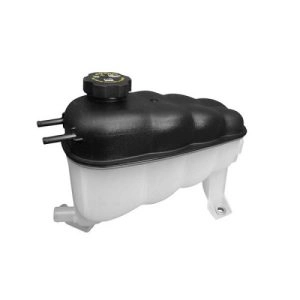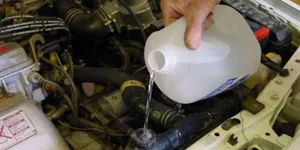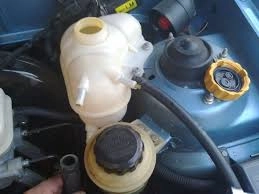The radiator cap is considered one of the important components of the cooling system. The cooling system is one of the most important systems in the car that requires attention, as it helps to maintain the engine temperature at the optimal level and protects it from damage.
The reservoir is responsible for storing the fluids that circulate within the system and maintaining their correct flow. However, sometimes the reservoir can face some issues that prevent it from properly performing its functions.

What is the radiator reservoir?
JerrycanRadiator WaterIt is a fundamental part of the car's internal engine cooling system. It is a container placed in the car engine that stores cooling water and pumps it to the internal radiator, which in turn cools the engine.
It is usually located on the upper right side of the engine so you can easily check it. The task of the reservoir is to store the coolant and keep it cool until it circulates in the cooling system, and to maintain the flow of the fluid so that the engine is fully cooled.
Signs that indicate damage to the radiator reservoir.
Since the radiator water tank helps in the full cooling function of the engine, we will present the signs that indicate there is a problem with it so you can avoid any issues due to its damage.
The water in the jug is constantly decreasing.
One of the first symptoms usually associated with radiator damage is the constant need to add coolant.
If small cracks occur in the radiator, this may cause the coolant it stores to leak or evaporate at a slow rate.
The cracks may be very small to the extent that they may not be clear to you when looking closely, but over time, they will lead to its emptying. Also, the continuous need to add coolant could result from a leak elsewhere on the engine. Therefore, it is recommended to thoroughly check the rest of the cooling system parts.
Colored water is accumulating under your car.
The most common sign of damageRadiator TankIf you notice a pool of colored water underneath your car, do not try to identify the color just yet, as there are different colors of car coolant, each serving a different purpose.
Engine temperature rising
Other more serious symptoms that indicate damage to the radiator water tank include an increase in engine temperature.
If the radiator has any problems preventing it from properly retaining the coolant, this could cause the engine temperature to rise. You should address any issue causing an increase in the engine temperature as quickly as possible to prevent any potential damage to the engine.
Coolant smell
If you notice a smell coming from the front of your car or already present throughout the vehicle, it could be due to an overflowing reservoir that has begun to leak. This usually indicates a coolant leak inside the engine compartment and the issue should be addressed as soon as possible.

Reasons for Water Leaking Near the Radiator Reservoir
Here are some reasons that can cause the coolant fluid to fill the tank and overflow:
Radiator Cap Damage:A damaged radiator cap can release coolant into the reservoir at a high speed, which can lead to the fluid leaking from it.
Damage to the engine head gasket:The engine head gasket creates a barrier between the coolant channels, engine oil, and the combustion chamber. Therefore, you’ll notice a coolant leak if this component is loosened or damaged.
Lots of fluids:If there is an excess amount of coolant in the reservoir, there will be no space for the hot coolant to expand, and you will notice a leak in the radiator reservoir when this happens.
Thermostat Valve Failure:A malfunction in the thermostat housing may prevent the thermostat valve from opening, leading to an increase in the engine temperature. If the temperature of your car's engine continues to rise, it will result in coolant leakage from the reservoir.
Malfunction in the water pump:If your water pump is defective or damaged, it may pump the coolant very slowly through the cooling system or stop the flow altogether. When this happens, you will notice an increase in the engine temperature and spots of coolant on the ground.
Radiator Damage:The lightweight radiator tends to wear out quickly, and if the radiator is broken or damaged, it can lead to a coolant leak.
How to maintain the radiator tank
To keep the radiator's reservoir in good condition, you should regularly change the water and add preservatives to prevent moisture and anti-rust substances to avoid corrosion. Also, you should check the air pressure in the water tank to ensure there are no leaks in the pipes and hoses.
If you are looking for a radiator reservoir for your car, we recommend that you make sure to choose the appropriate reservoir for your vehicle (refer to the car's manual). It should be made of high-quality materials for extreme durability and natural corrosion. Additionally, the capacity of the bottle should be proportionate to the engine size and requirements.Car cooling system.

In addition, the jug must be designed in a way that allows easy access and shut-off in emergencies. It should be easy to install and dismantle, so you can easily change the water when needed.

Comments